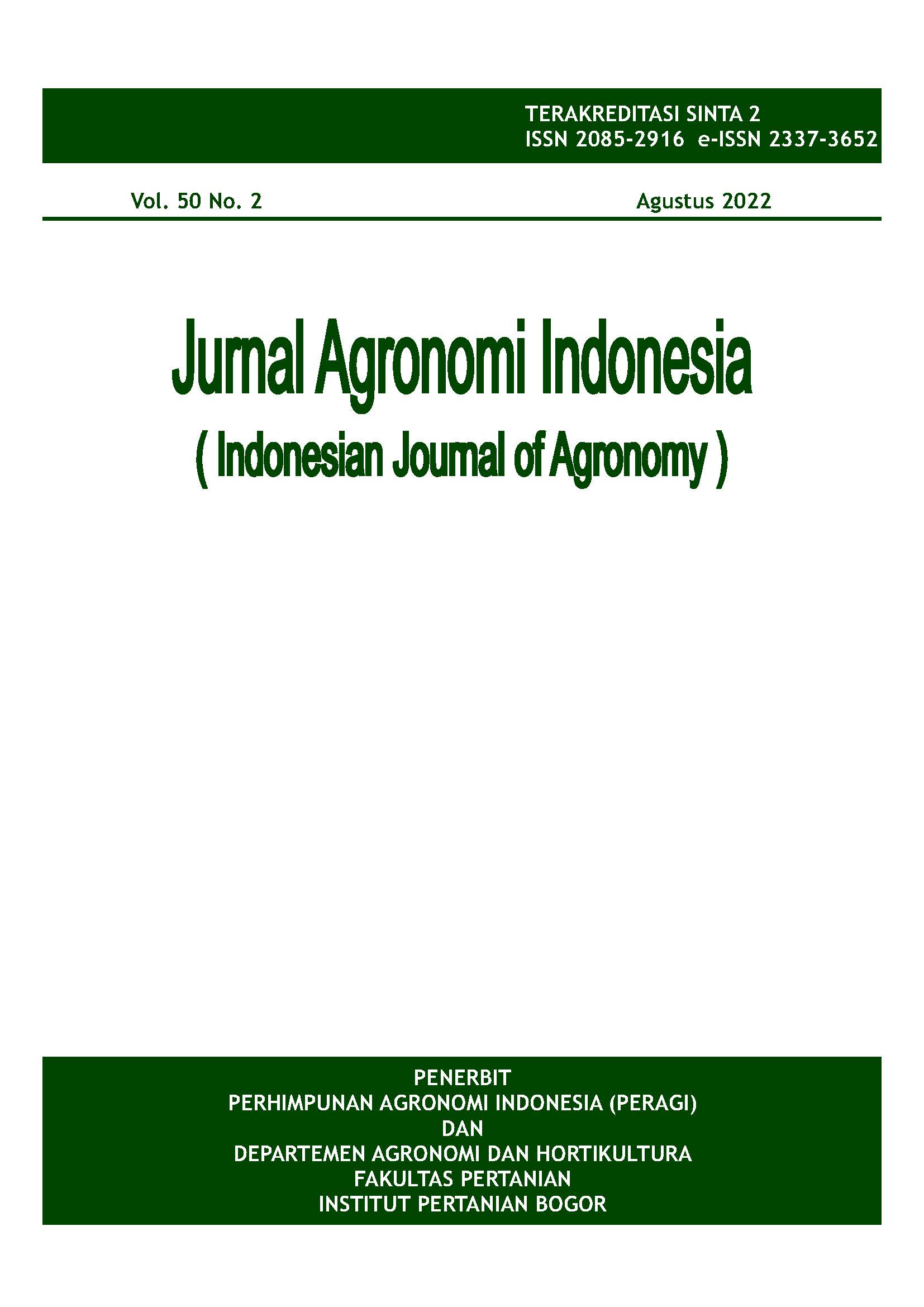Variability Response of Growth of 17 Taro Genotype Under Drought and Flooding
Abstract
One of the alternative sources of food in the midst of climate change is taro. Apart from being a source of carbohydrates, taro can adapt to various agro-climatic conditions and is easily found throughout Indonesia. The research aimed to obtain taro genotypes that are adaptive to drought and waterlogging. The study used a split-plot design with the main plot of water stress treatment consisting of 2 levels, namely dry land cultivation and saturated water cultivation, while the subplots were 17 genotypes of taro. In the growth parameters of taro, at observation 20 weeks after planting, the genotype of taro had a highly significant effect on plant height, stem diameter, number of suckers, and width of canopy, while for water treatment it had a highly significant effect on plant height and number of suckers, and gave a significant effect in stem diameter and width of canopy. Moreover, the growth of all taro genotypes was more vigorous in the dry land cultivation treatment, where the taro genotype produced higher plant height, bigger stem diameter, canopy width, number of suckers, and tuber diameter when compared to genotype with Saturated water cultivation.
Keywords: adaptation, climate change, drought, stress, waterlogging













